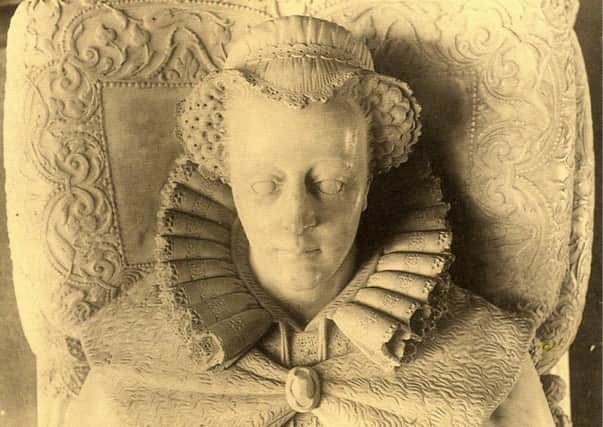Mary's visits merit at least a plaque


It goes without saying that I crossed the aisle to give a long angry stare in the direction of the equally fine memorial to Queen Elizabeth I who signed Mary’s death warrant in February 1587.
After the execution, Mary’s body remained for many months in Fotheringhay Castle before a formal burial in Peterborough Cathedral but she had the last laugh – if it’s possible to laugh without a head: in 1603 her son James VI became King of England and to make up for his silence at the time of the execution he demolished Fotheringhay and ordered the fine tomb in London which was to be at least as grand as Elizabeth’s.
Advertisement
Hide AdAdvertisement
Hide AdIn Falkirk we have a special interest in Mary because she was a regular visitor to the town throughout her life.
During the 19 years she spent under house arrest in England, Lord William Livingston of Callendar House and his wife were among her closest companions. Both undertook special missions on her behalf and suffered as a result.
The Livingston connection went back to the time when William’s father, Alexander the fifth Lord of Callendar, was appointed as one of the baby Queen’s guardians in 1542. His daughters, Mary and later Magdalen, were maids of honour to the Queen (part of the famous four Marys) and went with her to France for a long sojourn in the sun before the Queen’s return to Scotland in 1561.
Over the next six years she was a regular visitor to Callendar House and on one occasion witnessed the marriage of Mary Livingston to whom she gave many presents including Auchtermuchty and Millport! On that day too she had to listen to a fiery sermon from her old adversary John Knox.
Advertisement
Hide AdAdvertisement
Hide AdAfter her marriage to her cousin Lord Darnley which was attended by Lord William things went downhill for the Queen with her enemies growing in number.
Despite the fact that the Livingstons had adopted the new reformed Protestant religion while Mary remained a staunch Catholic, the family stayed loyal to her and she continued to show them great favour.
The last night she spent with Darnley was in Callendar House just a short time before his murder in Edinburgh.
As things began to unravel Lord William and men from Falkirk fought by her side at Carberry and later Langside where her cause finally came to an end and her exile in England began.
Advertisement
Hide AdAdvertisement
Hide AdBack in the days when the Forbes family owned the house the rooms occupied by Mary were given over to a collection of memorabilia including engravings, paintings and sculptures telling the story of the Queen.
All of them were sold at an auction in 1963 before the town council took possession of the house and grounds.
The most interesting item was a lovely embroidered panel with an M S monogram (for Marie Stuart?) which sold for £13! Today some experts think it might have been a gift made for the Livingstons by the Queen’s own hand. She was certainly a fine needlewoman. Today it is in private hands in Bridge of Weir where I was able to photograph it nearly 30 years ago.
In the house itself today there is nothing much to remind us of this historic connection which is a pity.
If Rabbie Burns deserves a plaque for his short overnight stop in 1787 (and he certainly does) then Mary’s regular calls on our town merit nothing less.